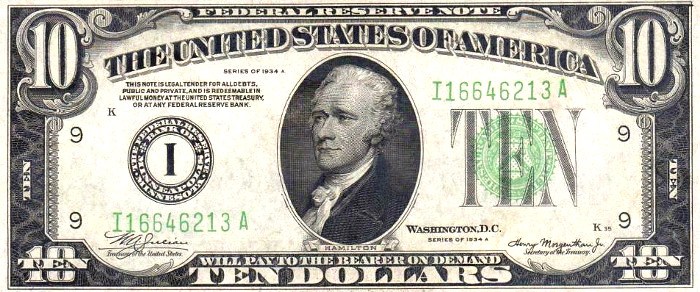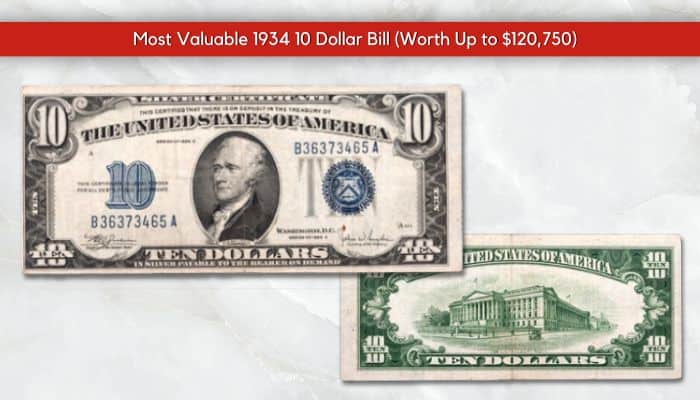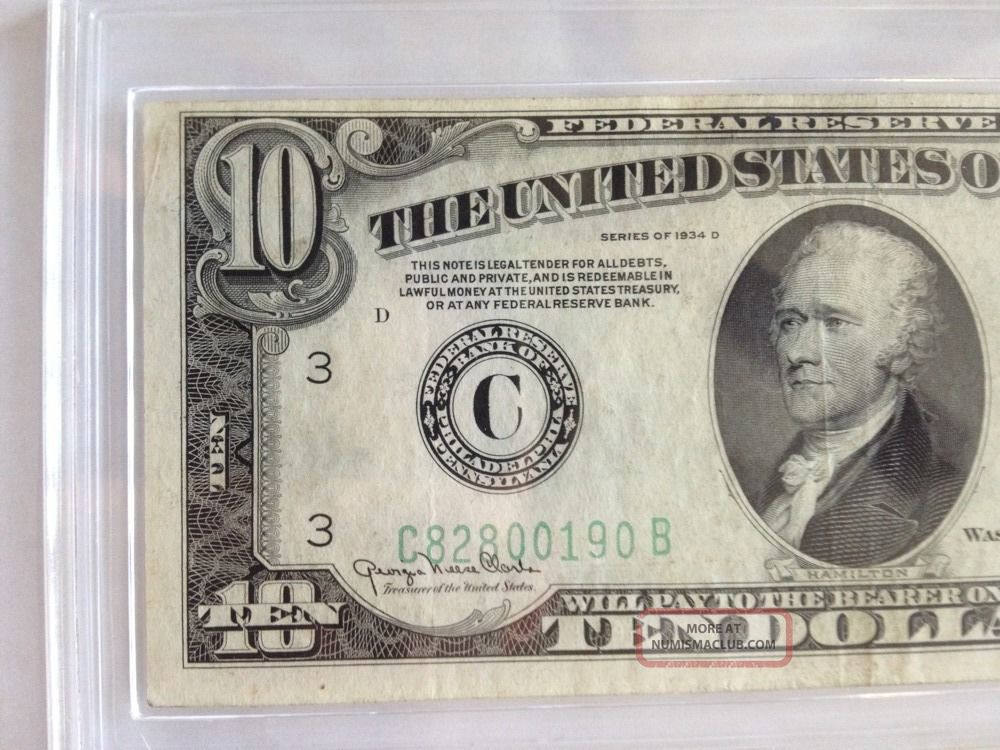Value Of 1934 Ten Dollar Bill

A small piece of paper, printed nearly a century ago, continues to fascinate collectors and history buffs alike: the 1934 $10 bill. Its value today is far more nuanced than its face value suggests, influenced by a variety of factors that range from condition and rarity to historical significance and collector demand.
Understanding the current value of a 1934 $10 bill requires a dive into numismatics, the study and collection of currency. Several variables influence its worth, making a definitive price tag elusive.
What affects the price of a 1934 $10 bill? Let's explore the key elements.
Grading and Condition
The condition of the bill is arguably the most significant factor determining its value. Bills are graded on a scale, typically from Poor to Uncirculated.
An Uncirculated bill, appearing as if it just came off the printing press with crisp corners, vibrant colors, and no folds, will command the highest price.
Conversely, a bill in Poor condition, exhibiting significant wear and tear, fading, tears, or stains, will be worth considerably less – sometimes only slightly more than its face value.
Rarity and Series
The 1934 series of $10 bills includes several sub-series, denoted by letters following the year, such as 1934, 1934A, 1934B, and 1934C. Some are more common than others.
The presence of a star (*) at the end of the serial number indicates a replacement note, printed to correct errors during the printing process. These star notes are often rarer and more valuable.
Furthermore, bills bearing the signatures of certain Treasury officials or Federal Reserve District seals in specific locations can also impact their value, contributing to their unique scarcity.
Federal Reserve District
Each $10 bill also features a seal representing one of the twelve Federal Reserve Districts. The district is identified by a letter and number, like A1 for Boston or L12 for San Francisco.
While most districts are relatively common, certain districts, particularly those with lower print runs or fewer surviving examples, can significantly increase a bill's value.
Collectors often specialize in collecting bills from specific districts, adding to the demand for rarer ones.
Historical Significance
The 1934 series of $10 bills was issued during the Great Depression, a period of significant economic hardship in the United States. This era lends a certain historical significance to these notes.
The images on the bill, featuring Alexander Hamilton, the first Secretary of the Treasury, and the U.S. Treasury Building, reflect the nation's commitment to financial stability during a time of crisis.
Consequently, collectors who are drawn to American history or the Depression era may be willing to pay a premium for these bills.
Current Market Value: A Range
Given the many factors at play, pinpointing an exact value is difficult. However, we can provide a general estimate.
A circulated 1934 $10 bill in good condition might fetch anywhere from $12 to $25. A crisp, Uncirculated example could be worth $50 to $150, or even more, depending on the specific series and presence of a star.
Rare varieties, such as those from uncommon Federal Reserve Districts or with printing errors, can command prices ranging from hundreds to thousands of dollars. It’s important to note that the value of currency fluctuates with the market.
Where to Get an Appraisal
If you possess a 1934 $10 bill and wish to determine its precise value, it's advisable to consult with a reputable coin and currency dealer or a professional grading service.
Organizations like the Professional Coin Grading Service (PCGS) and the Numismatic Guaranty Corporation (NGC) provide expert grading services, assigning a numerical grade to the bill based on its condition. These services offer some degree of protection.
A certified grade can significantly increase the bill's market value and provide assurance to potential buyers and sellers.
The Human Element: Why Collect?
Beyond the monetary value, there's a deeper appeal to collecting vintage currency. It offers a tangible connection to the past, providing a glimpse into the economic and cultural history of a nation. Collectors find satisfaction in piecing together a collection, researching the history behind each note, and preserving these artifacts for future generations.
The 1934 $10 bill, therefore, represents more than just ten dollars. It is a piece of American history, a tangible link to a pivotal era, and a fascinating subject for collectors and history enthusiasts alike.
Whether it's worth slightly more than its face value or a considerable sum, its story continues to resonate today.


















